Baskets were essential in the homes and farms of our grandparents and ancestors. They were purpose-made and often named accordingly. The egg basket is a case in point. It has a double bowl shape indented by the center hoop and is specifically designed to prevent eggs from rolling around. Other examples include harvest baskets, apple baskets, berry baskets, sewing baskets, market baskets and lunch baskets. Craftspeople of the generation made all manner of hand-woven vessels to gather, carry and store.
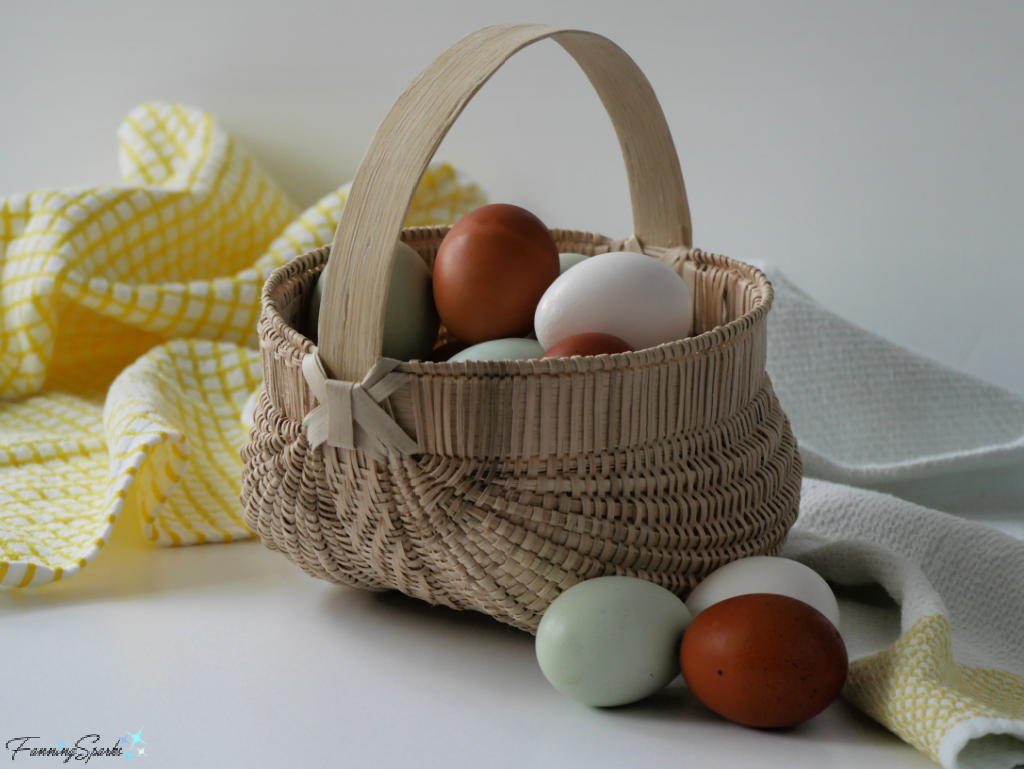
Last week at the John C Campbell Folk School, my fellow students and I learned how to make a traditional egg basket. Made of white oak with rib-and-split basic construction, our egg baskets followed the traditional basket making techniques of Cannon County Tennessee.
Here’s a look at one of the completed baskets made by fellow student, the super talented and knowledgeable basket maker, Tony Stubblefield of JASkets. (Special thanks to Tony for graciously allowing me to include photos of his basket).
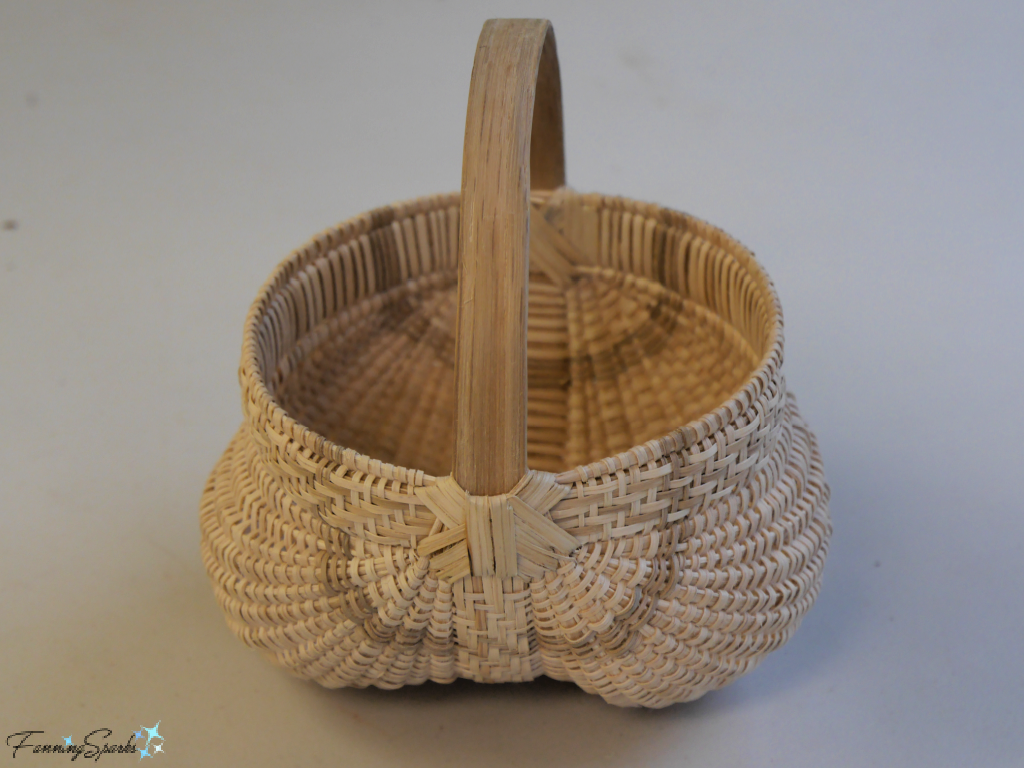
The next photo provides a closer look at Tony’s weaving—precisely spaced, perfectly packed and beautifully shaped! Sharp-eyed readers will surely notice a significant difference between Tony’s basket and mine. But that’s as it should be—this is only the second basket I’ve made and Tony has been making beautiful baskets for over 30 years!
This photo also highlights the Cannon County Tie or Bowtie, a X pattern with a vertical bar, which is characteristic of Cannon County baskets.

Our basketry class Cannon County Style, White Oak Egg Basket was taught by Sue Williams. I never imagined I’d meet someone recognized as a “tradition bearer” but the Folk School has a way of making extraordinary things happen. Sue was awarded the 2019 Tennessee Folklife Heritage Award in recognition of her efforts to preserve the Cannon County white oak basket making tradition. The announcement put it this way “A committed and exacting artist and mentor, Sue Williams, of Morrison, has almost single-handedly taken on the preservation of the Cannon County white oak basket making tradition. One of the most respected community-based craft legacies in the United States, Cannon County basketry, is treasured for its artistic intricacy and deep heritage. Sue’s devotion to teaching this art, and advocacy on the statewide and regional level, has secured the tradition’s survival beyond the passing of the original basket making families.” Sue’s expertise and knowledge were evident in the classroom. Thank you Sue for making my first white oak basket making experience great!
Sue began by explaining how white oak baskets start with a set of hoops—a handle hoop and a rim hoop.

We learned one thing that sets white oak baskets apart from many other handcrafted baskets is the challenge of acquiring the necessary materials. These baskets are made from a white oak tree (Quercus alba) specifically harvested for this purpose in the Appalachian area of the US Southeast. The basket maker selects a tall, straight, undamaged tree, without any lower limbs approximately the size of a stove pipe. Then cuts it down and saws it into 4-5 foot poles. The poles are split lengthwise, called splitting board fashion, into pie-shaped pieces using axes, wedges, froes, wooden mallets and other hand tools. Typically the poles are cut into 8ths or 16ths. The heartwood is removed and then the long pie-shaped pieces are hand-split board fashion along the growth rings. Imagine the difficulty of splitting a 5 foot piece of wood along a growth ring! These splits are then carved, planed and shaped into the various parts needed for the basket.
Thanks to Sue, and her assistant instructor Michelle Hennessee, all this preparatory work was done before our class and we were able to start with prepared materials. Sue had pre-assembled the handle and rim hoops with an initial 10 ribs. She also jump-started us with a few finished ribs and some narrow trimmed weavers. But we were also provided with a bundle of rough splits and some rough weavers.
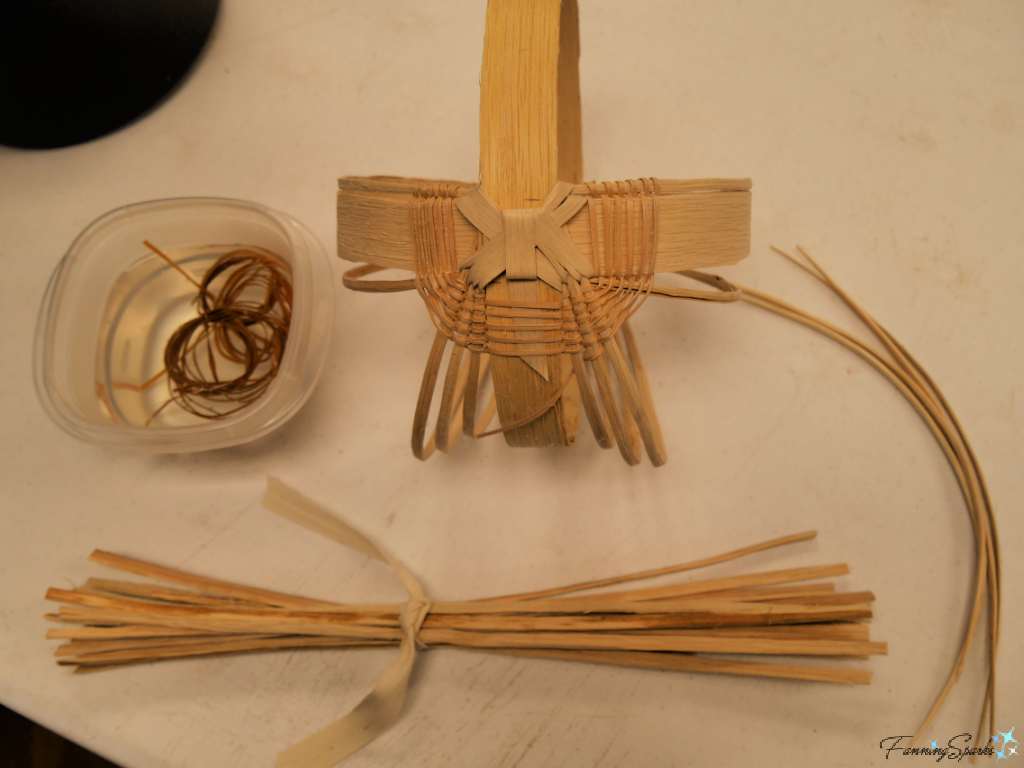
One of our first tasks was to whittle the rough splits into finished ribs. We protected our knees with denim and then held our knives stationary while pulling the splits under the knife edge.
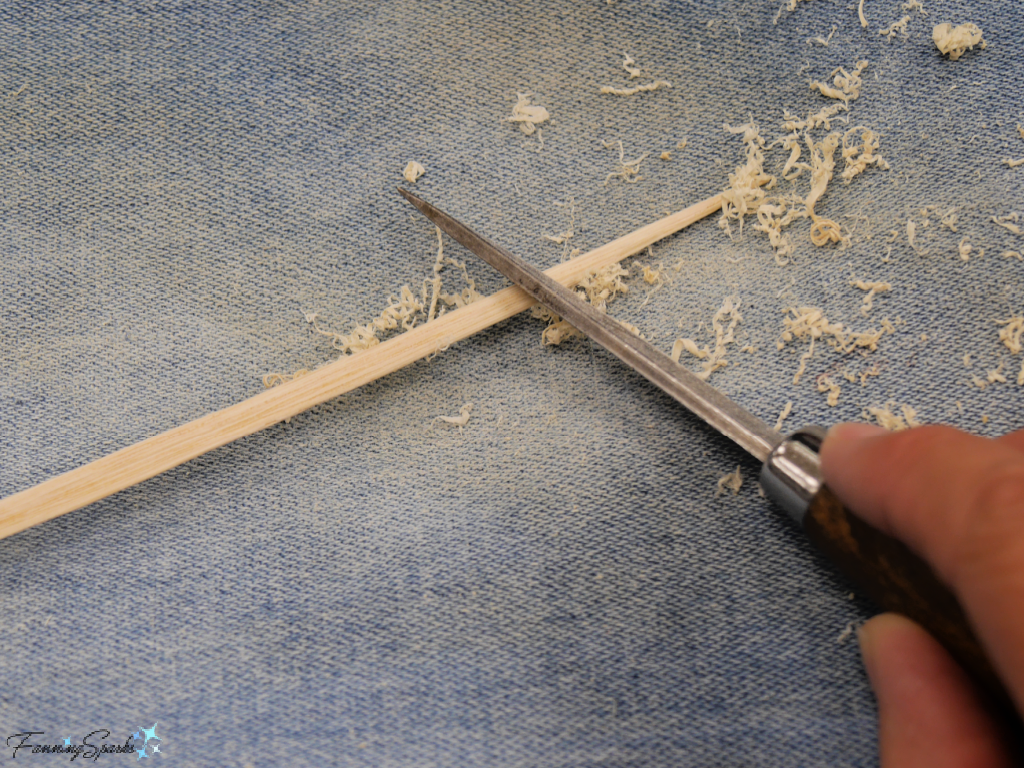
Then we carved points on the ends of the ribs and carefully shaped them into curves.
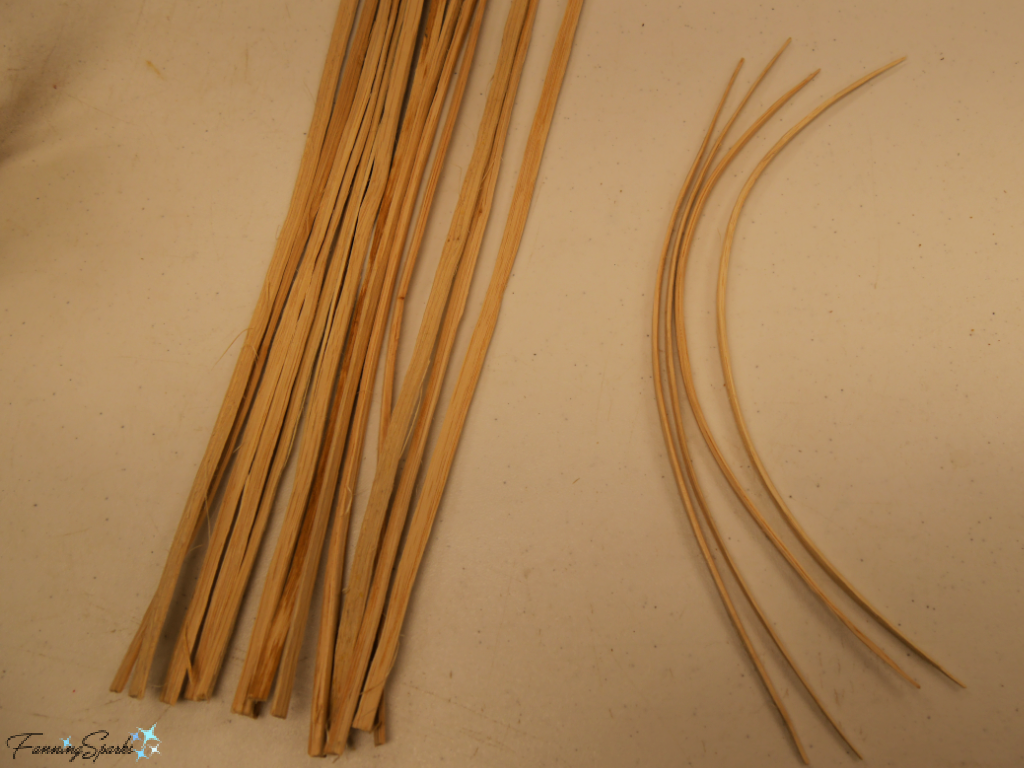
With our ribs ready, we began working on our baskets. We added ribs to our baskets—gradually building up from the initial 10 to 30 ribs. The thin weavers were threaded through the ribs and around the rim, using the classic over-under pattern, to hold the new ribs in place. This photo shows my basket after a few more ribs were added to the bottom.
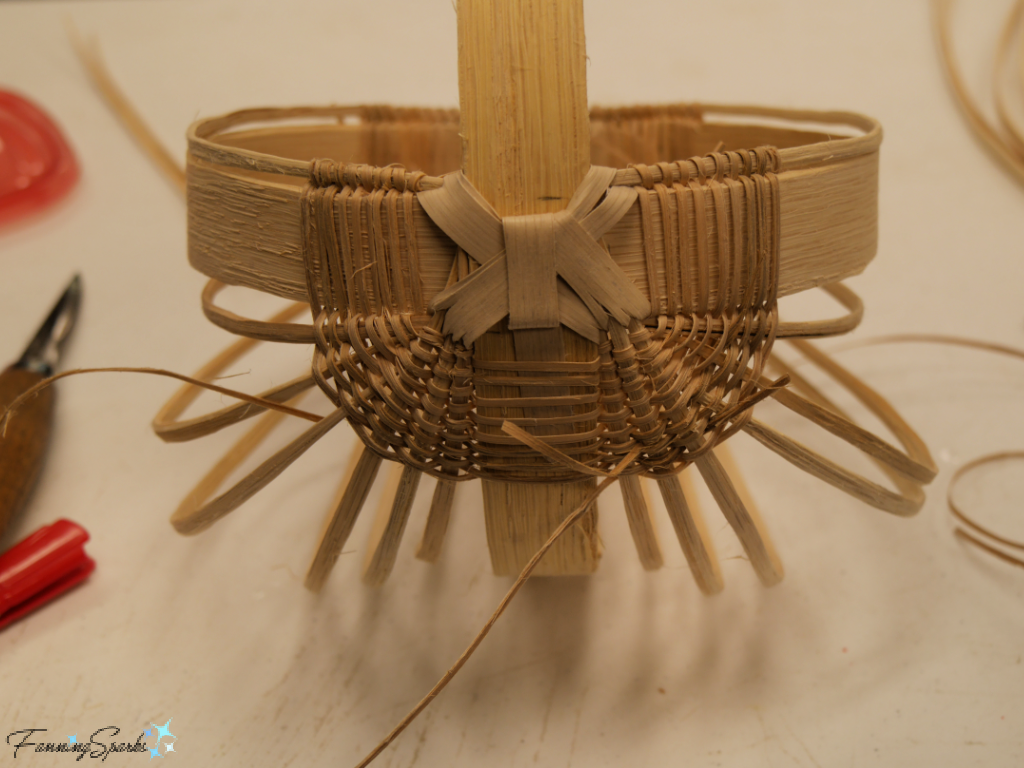
Here’s a closer look at the ends of the ribs after they were inserted into the weaving. The new ribs share slots with the ribs already in place.

On the second day, we learned to prepare our weavers. We used a similar scraping technique to that used on the ribs and pulled the long thin strips of white oak under the knife edge.
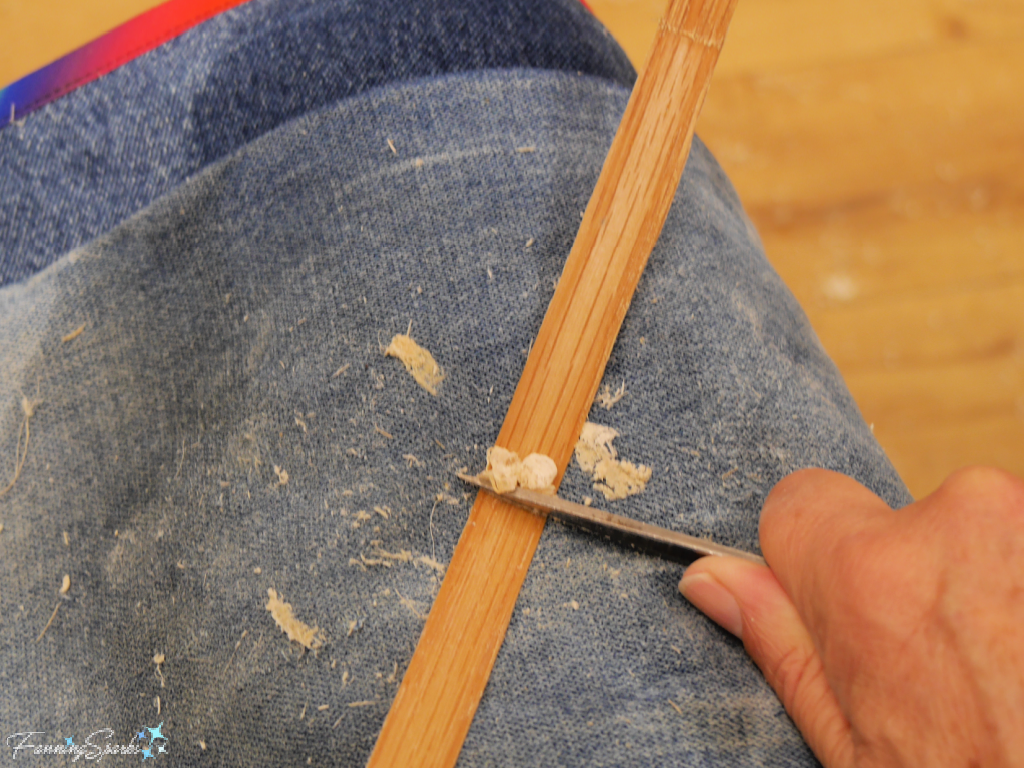
The final step in preparing the weavers was to cut these now paper-thin strips to a scant 1/16 – 1/8” width.
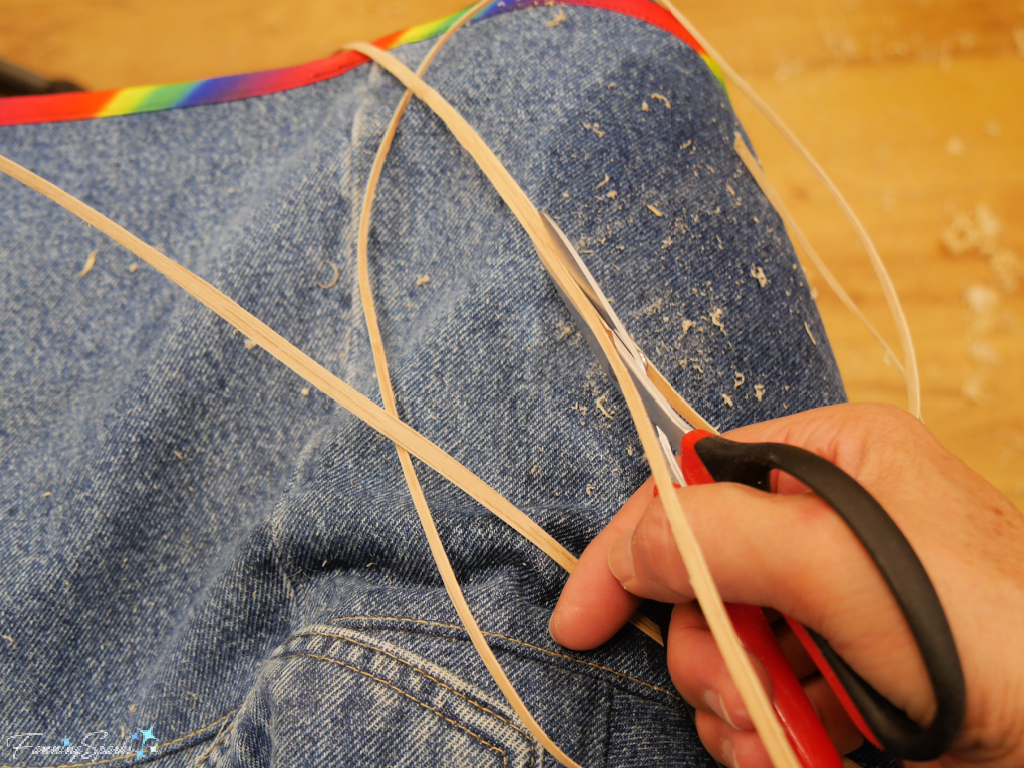
Here’s how my basket looked after all the ribs had been inserted.

As I soon learned, a great deal of effort would be needed to manipulate those ribs into the desired shape. The ribs had to be separated, equally-spaced and leveled, all while maintaining a consistently smooth weave and molding the basket into its shape. Here’s how the basket looked after several more hours of weaving.
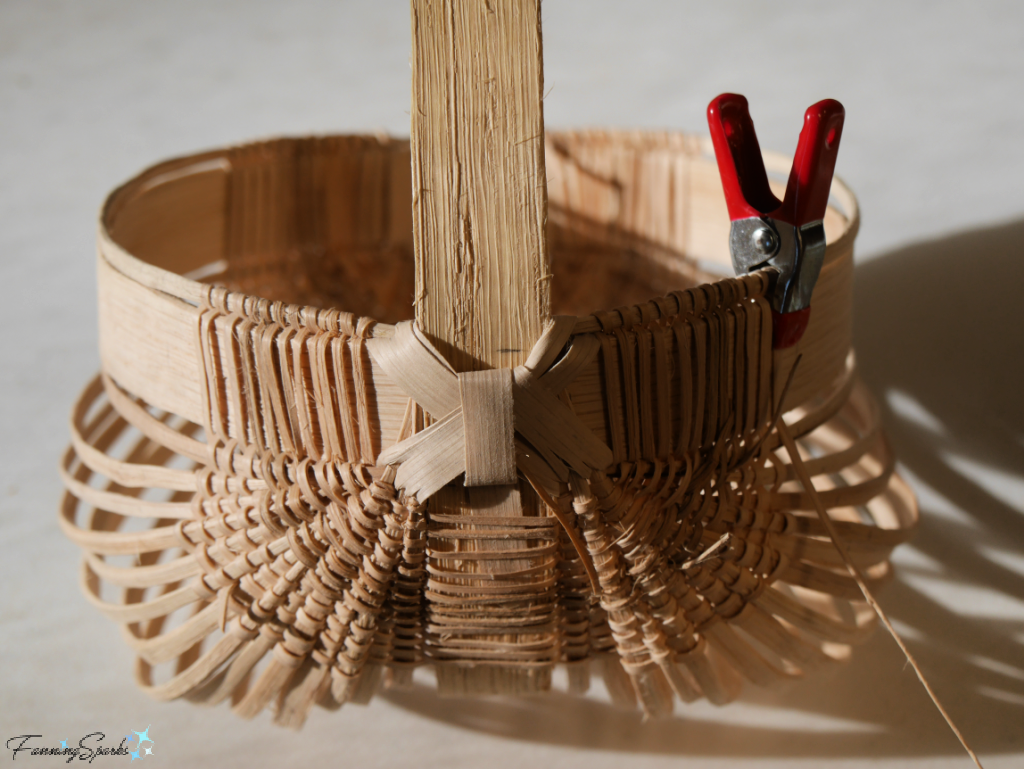
We used a measuring tape to find and mark the center of each rib.
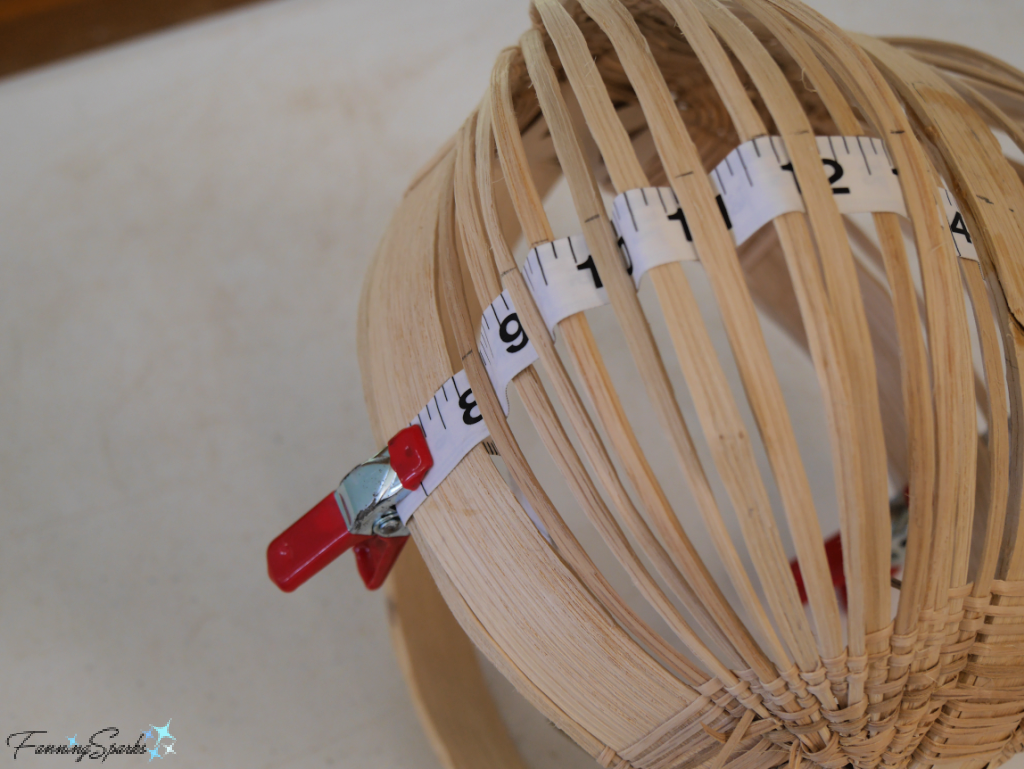
Next we learned about turn backs which is a technique used to fill in the woven section. It’s called a turn back, I suppose, because instead of weaving a full row from rim to rim, you stop part way through the row and turn back. Thanks to the patient assistance of my instructors, my basket was taking shape by the end of the third day. There was, however, still a considerable amount of weaving to be done.
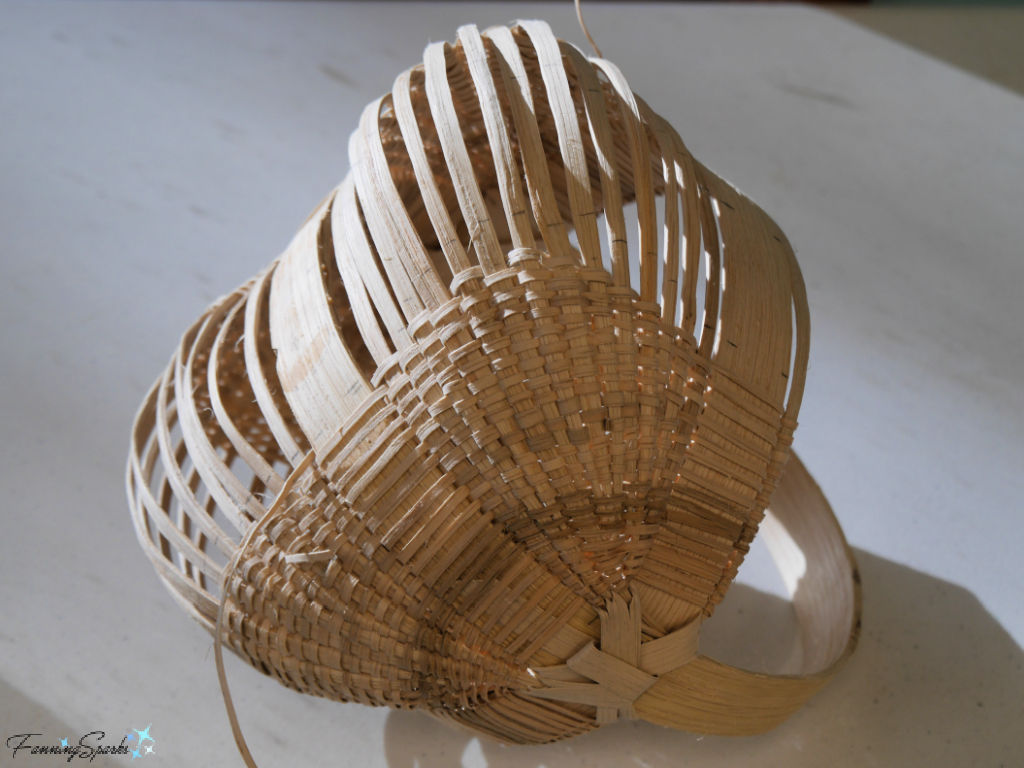
It’s worth noting the original Cannon County baskets used wider weavers than we did in our baskets. Sue explained, “basket weaving was Cannon County’s primary income during the Great Depression. The land near Woodbury really didn’t work for major crop production, so the locals took to making and bartering baskets for what they couldn’t produce on their small farms.”
The next day was spent weaving more and more of those 1/16” wide, paper-thin strips of white oak into our baskets. A major milestone was achieved when we finished filling in with the turn backs and could start weaving straight from rim to rim. Eventually I got into a smooth rhythm and things progressed more quickly. I managed to finish the straight weaving and close in my basket. By the end of the day, my basket was ready for its first outdoor photo shoot!
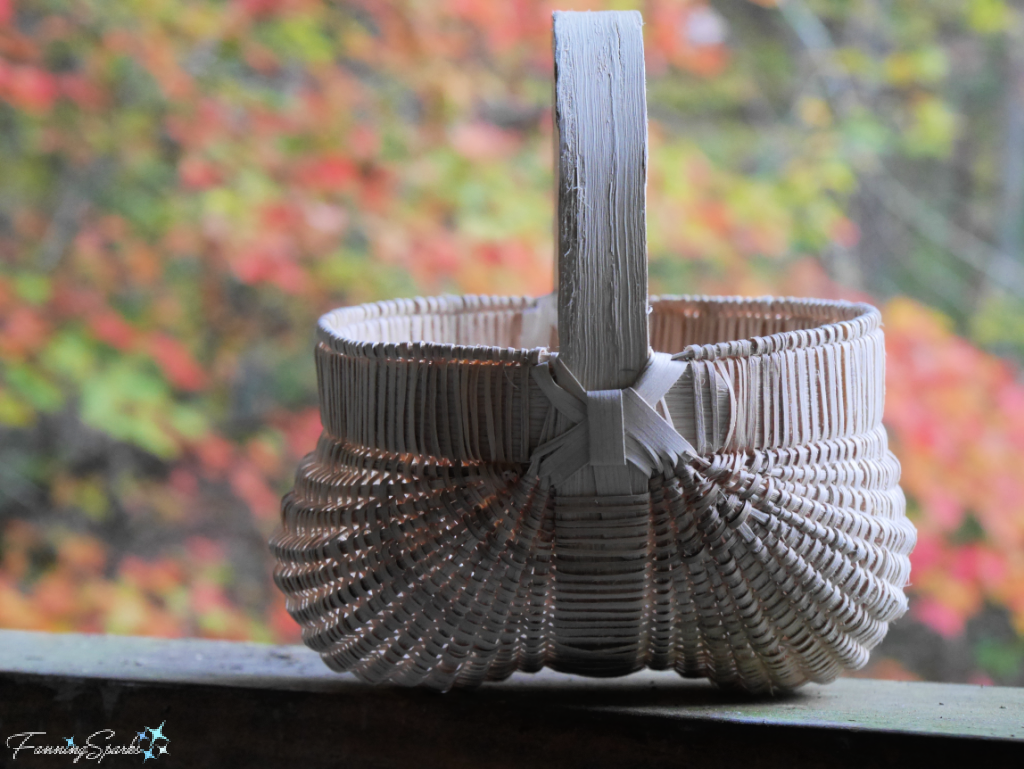
On our final day, we learned to trim our baskets. We used a twill pattern to cover the hoops on the bottom and sides.
 Keeping track of the pattern to ensure the right number of overs and unders was not easy and I found myself removing almost as much as I’d woven. But I persisted and here’s how my bottom twill pattern looked with only one more row to weave.
Keeping track of the pattern to ensure the right number of overs and unders was not easy and I found myself removing almost as much as I’d woven. But I persisted and here’s how my bottom twill pattern looked with only one more row to weave.
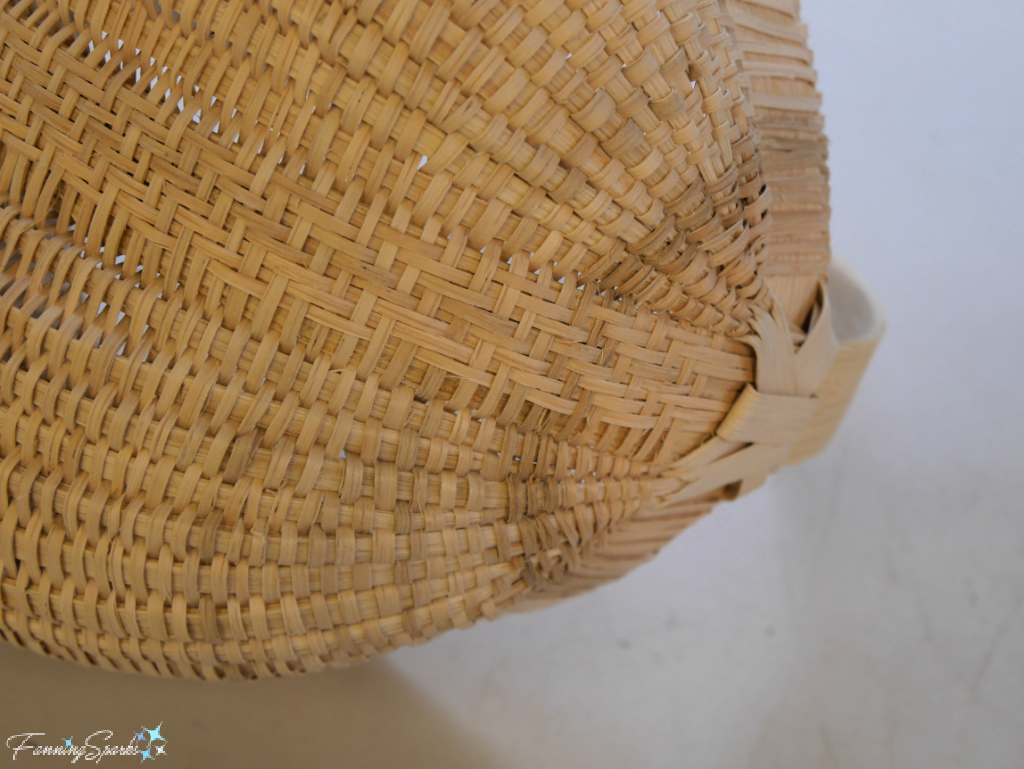
Unfortunately, I didn’t have quite enough time to trim my rim hoop during class but I will be able to finish it on my own. Regardless, I’m thrilled with how my basket turned out and couldn’t resist staging it for a few shots.
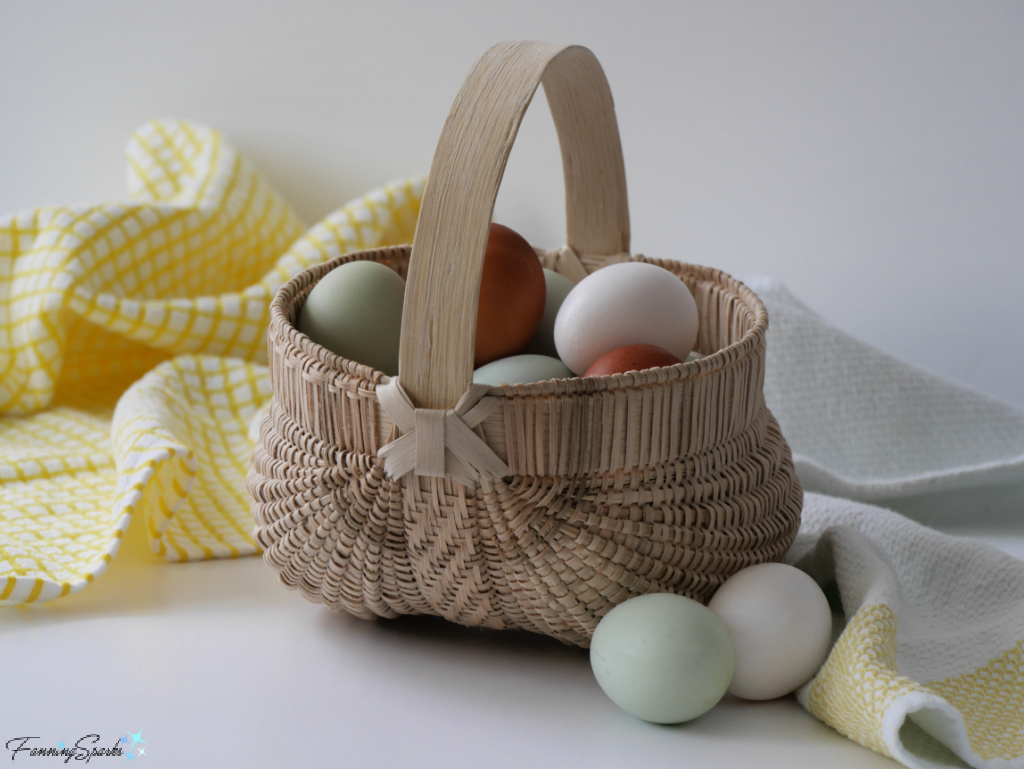
Here’s a peek inside the rim where my signature strip is tucked into the weavers.

Now back to that twill trim… under 1, over 2, under 2, over 2, under 2, over 2, under 2…
More Info
Special thanks to Sue, Michelle and my classmates for a fantastic week of learning and making in the studio!
You can reach Sue Williams, of Hanlin Farm Basketry, via email. Sue teaches at the John C Campbell Folk School on a regular basis. Check the Folk School website, under Basketry, for Sue’s next class.
You can learn more about JASkets and Tony Stubblefield on his website or Instagram account. Don’t miss the photo gallery of the baskets he’s made and collected.
I’m currently participating in a 6-week Work Study Program at the John C Campbell Folk School. Look for Work Study on the Folk School website for more info or check my FanningSparks’ blog posts about my Work Study Program experience.
I’ve had the pleasure of attending several Folk School classes including:
. Weave a Market Basket
. From Sheep to Shawl
. Flat-Plane Carving with Harley
. Center, Open, Pull
. Swept Away by Broom Making
To learn more about Appalachian basket making, you may want to check out John Rice Irwin’s book Baskets and Basket Makers in Southern Appalachia. This book features a stunning collection of baskets and includes the personal story behind each basket. The author is the founder and director of the nationally-known Museum of Appalachia in Norris, Tennessee where many of the baskets from the book can be viewed.
Today’s Takeaways
1. Don’t underestimate the impact a single person can have on the survival of a craft tradition.
2. The Folk School brings together seasoned professionals and eager beginners to make and learn in a nurturing environment.
3. The white oak baskets of Cannon County Tennessee are treasured for their artistic intricacy and deep heritage.

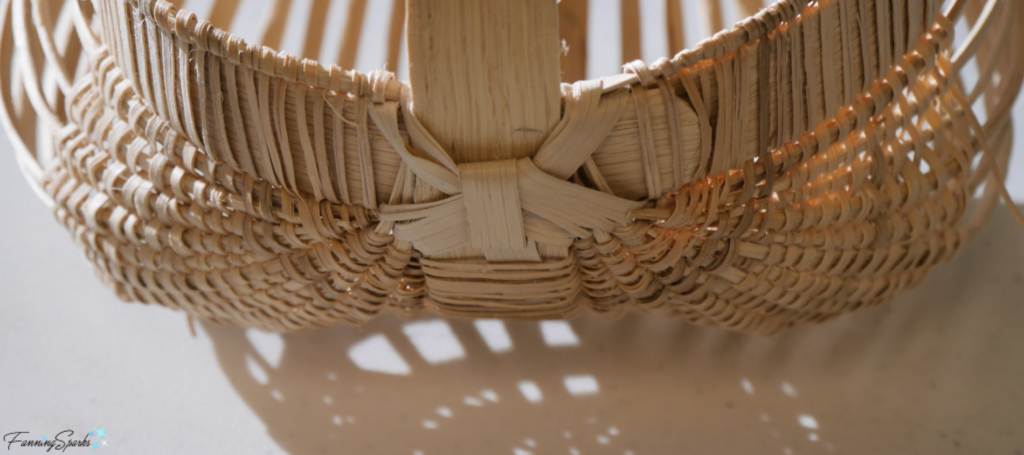


2 Comments
@Marian, Thanks! This project did take a great deal of patience! Peg
Did I mention how I admire your patience?
Wow! Nice work